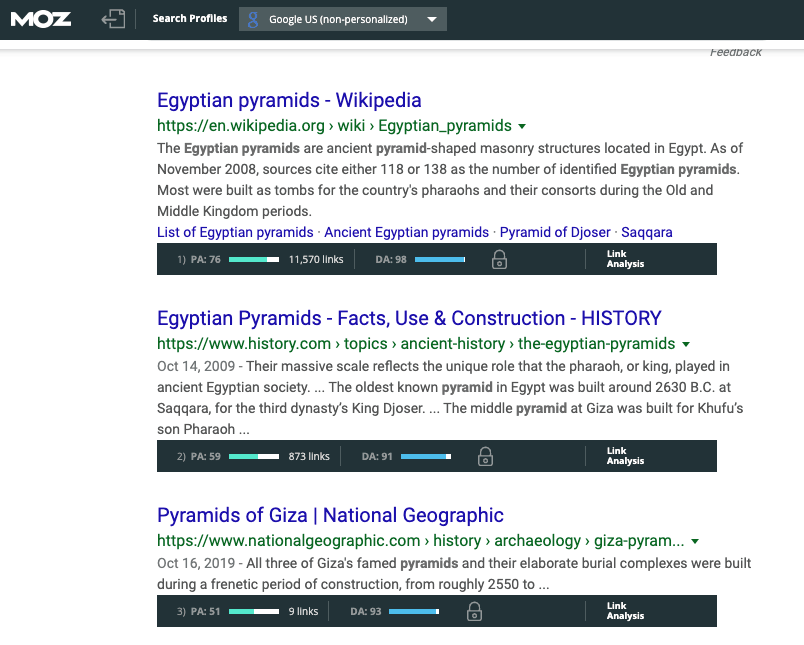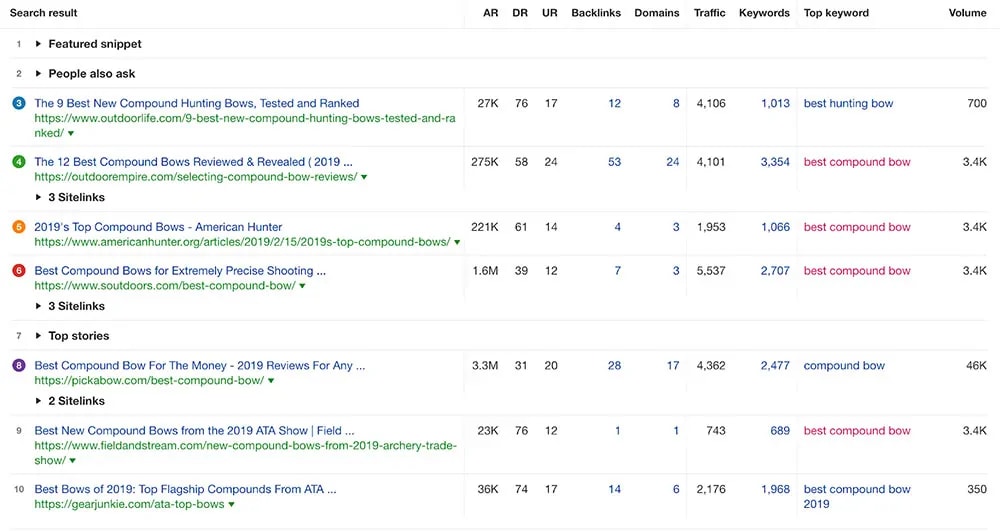
How To Do A Quantitative Competitor Analysis For Your Website
Get helpful updates in your inbox
[et_pb_section fb_built=”1″ admin_label=”section” _builder_version=”3.22″ _i=”0″ _address=”0″][et_pb_row admin_label=”row” _builder_version=”3.25″ background_size=”initial” background_position=”top_left” background_repeat=”repeat” _i=”0″ _address=”0.0″][et_pb_column type=”4_4″ _builder_version=”3.25″ custom_padding=”|||” _i=”0″ _address=”0.0.0″ custom_padding__hover=”|||”][et_pb_text admin_label=”Text” _builder_version=”3.29.3″ background_size=”initial” background_position=”top_left” background_repeat=”repeat” hover_enabled=”0″ _i=”0″ _address=”0.0.0.0″ header_2_font=”Oswald Light||||||||”]This is a guest blog from renowned blogger, Shabbir Nooruddin.
How To Do A Quantitative Competitor Analysis For Your Website
In my earlier post on how I do keyword research, I touched a little bit on how to do competitor analysis whenever I find a keyword that is a good fit for my website.
In case you missed it, the gist of that form of analysis was purely qualitative:
- Does the page you’re looking at specifically target that keyword?
- Are they satisfactorily answering the query?
- Is the content in-depth and comprehensive?
If some or none of these bullets were not checked when doing your keyword analysis, that is a good indicator of a keyword phrase you can potentially target.
Is the keyword you’re targeting being answered by a competitor?
Many times, Google will show you a search result about something similar to the topic, but not exactly the same, where the actual query is not covered. Google does this because they can’t find any satisfactory page to answer this query, so they’re showing what they think is the next best thing.
This is not to be confused with Google showing you synonyms. For example, there used to be a time where “best coffee maker” and “best coffee machine” were considered two separate keywords, but Google is smarter now, and they know that a coffee maker and a coffee machine are the same things.
So if you were to search for “best coffee maker” and found pages targeting “best coffee machine” instead, that doesn’t necessarily indicate a gap in the results.
However, if you searched for “best cappuccino machine” and found pages targeting “best coffee maker/machine” ranking in the top spots, that may present an opportunity, since coffee machines and cappuccino machines are not exactly the same thing.
Finally, the last thing you can check qualitatively is whether the sites appearing in search results are currently ranking in the top 10 for a particular keyword are huge authority sites like Forbes and Entrepreneur (or industry leaders), or smaller sites like affiliate sites and micro-sites.
If even 2-3 search results are from micro and affiliate sites, that’s a good indicator that Google favors these kinds of sites for this kind of keyword.
With that quick recap out of the way, let’s now look at some ways to do a qualitative analysis of your keywords.
What are Domain Authority and Page Authority?
For a more quantitative approach, you can look into the domain authority and page authority for the top 10 search results.
Domain authority is a proprietary measure used by many SEO tools to calculate how authoritative or powerful a domain is based on the quality and quantity of backlinks pointing to it. If a domain meaning all pages across the domain) have many high-quality backlinks pointing to that domain from other high authority domains, it will have a higher DA (Domain Authority).
Page authority (PA) is the same as domain authority, the difference is that page authority is a measure of backlinks pointing at that particular page.
The page authority needle will generally move faster than the domain authority needle since just one or two good backlinks to one page can really give it a boost, but an entire domain would probably need tens or hundreds of backlinks at the least.
The DA score will fluctuate depending on which tool you’re using, but generally, anything over 30 or 40 I would consider medium, and anything over 50 or 60 I would consider high.

Competing against high DA and high PA
Suppose that most of the results you’re seeing are all super authority sites with relatively high DA’s and relatively high PA’s as well.
This means that the domain itself is very powerful, and the page itself also has plenty of backlinks pointing to it.
You could try to take these guys on, but it will take a lot of effort. If you find a keyword like this, skip it.
It is also worth considering how you might stack up against this site when comparing some of the YML criteria, or Google’s own guidelines on great content.
Competing against high DA and low PA
The next situation is a high DA (authority site) with a low PA. The domain may be very powerful, but the page itself is comparatively weak.
Here, you’ve got to look one step further and go back to qualitative analysis. Even though the domain is powerful, is it relevant?
Let’s say you searched for “best bow and arrow” and one result was from a high authority site about something totally different, and the page authority was very low (0 backlinks).
This is a potentially easy keyword to tackle for a site dedicated to the outdoors or archery since those two topics are far more relevant. So even though the DA is higher, you have a shot because of the relevance factor.
If the top-ranking result is an authority site about archery, and the PA happens to be low, it will be a bit of an uphill battle.
Targeting results with low DA and high PA
The next potential situation you can run into is finding a result where the site ranking has a low DA, but a high PA.
This is probably a microsite or a niche site much like the one you are looking to build, and they happen to have built a few good backlinks to their pages.
Keywords like this are fair game. If you can then
- Write better content
- Build more good quality backlinks to the page and your domain in general
Then, you have a good shot at outranking them.
Low DA and low PA
Low DA and low PA keywords are like low hanging fruit. Low authority domains with low authority pages ranking in the top spots for a particular keyword are huge opportunities, especially if you already have an established site and are looking for content ideas.
Even if you’re just starting a new site, producing better content and building one or two backlinks will give you an edge right away.

Finding this data with Ahrefs or other free SEO tools (paid)
Ahrefs is the easiest way to find out the DA and PA of a result, though they call it DR and PR. It’s essentially the same thing: lower values indicate a better chance of ranking.
You can also use the MozBar Chrome Extension for free when looking at the search results in Google.
In Keywords explorer inside Ahrefs, if you enter any keyword, Ahrefs will pull up the top 10 results in Google (though results may vary from location to location, it’s still a good starting point).
For each result, Ahrefs will also show you the DR, PR, and the number of domains and unique links that are coming to each result.

From here, you can eyeball everything to get an idea.
Look for:
- Domain relevance: is the domain/brand focused on this topic?
- Page relevance: is the page targeting this specific query?
- The DR of the domain
- The PR of the page
- The number of domains and the number of links coming to the page(1 domain can be sending 1000 links too, so you need to look at both figures together)
You can also see a lot more useful data, like what organic keywords this page also ranks for and what is the top keyword they are ranking for.
If you don’t have Ahrefs, you can also use Open Site Explorer or SEMRush, but I personally believe Ahrefs has one of the biggest backlink databases on the internet.
Accessing low competition keywords
If you have a paid subscription to Ahrefs, you can use their keyword research tool to uncover some really low competition keywords.
If you head over to their Keyword tool and search for any keyword, you can click on “all keyword ideas” in the menu on the left and then filter the resulting list by keyword difficulty. By setting the minimum to 0 and the maximum to 0 (or any other number, but to get the easiest potential keywords, keep it at 0).

Ahrefs Keyword Difficulty is their own calculated measure of how difficult it is to rank for a term based on the number of backlinks you should need to appear in the top ten search results in Google.

Note that I say should, because this is not an exact science. Ahrefs is averaging out the number of links the top ten current ranks have, and factor in this information to determine how many backlinks you would need to compete.
However, bear in mind that you can’t just crank out a blog post for a 0 Keyword Difficulty keyword and expect to rank right away – you’ll need to do some qualitative analysis along with it to pick out winners.
Is there a keyword Golden Ratio?
A way of assessing how competitive a keyword is by using the Keyword Golden Ratio (not a real thing).
The Keyword Golden Ratio, or KGR, is a technique touted by many people in the affiliate marketing space as a unique and effective way to measure competitiveness. As with anything created by people on the internet that is not backed by a Google patent or any other real SEO data, take it with a grain of salt.
The principle of the KGR is to see how many people have optimized their content specifically for a particular keyword. You can find this out by doing an “allintitle:” search in Google.
For example, if you searched “allintitle:best bow and arrow set” you would only see results where “best bow and arrow set” is in the title tag.

To calculate the KGR, you then take the total number of results from that search and divide it by the volume of the keyword. There are many different opinions on the ratio, but the lower the better.
There’s plenty of anecdotal evidence suggesting this is a pretty useful way of seeing the competitiveness of keywords, and some people have even made a spreadsheet for easily calculating the ratio.
Conclusion
Combining qualitative analysis with quantitative analysis helps you make a better, more thorough, keyword plan.
Some publishers even go so far as to set an exact number of links they need to build for each piece of content to exactly outrank their competitors but this is always a mixed bag.
Focusing on the lowest competition keywords can rank a website with very few links, too, so you need a strategy that combines choosing the right keywords and building strategic links.[/et_pb_text][/et_pb_column][/et_pb_row][/et_pb_section]
Shabbir Nooruddin is an online entrepreneur and digital real estate investor. He started his first site in 2011 and has been buying, selling, and growing sites ever since. <div class="yj6qo ajU"></div>
Featured Content
Checkout this popular and trending content

Ranking In Universal Search Results: Video Is The Secret
See how Flickify can become the ultimate SEO hack for sites missing out on rankings because of a lack of video.
Announcement

Ezoic Edge: The Fastest Way To Load Pages. Period.
Ezoic announces an industry-first edge content delivery network for websites and creators; bringing the fastest pages on the web to Ezoic publishers.
Launch

Ezoic Unveils New Enterprise Program: Empowering Creators to Scale and Succeed
Ezoic recently announced a higher level designed for publishers that have reached that ultimate stage of growth. See what it means for Ezoic users.
Announcement
